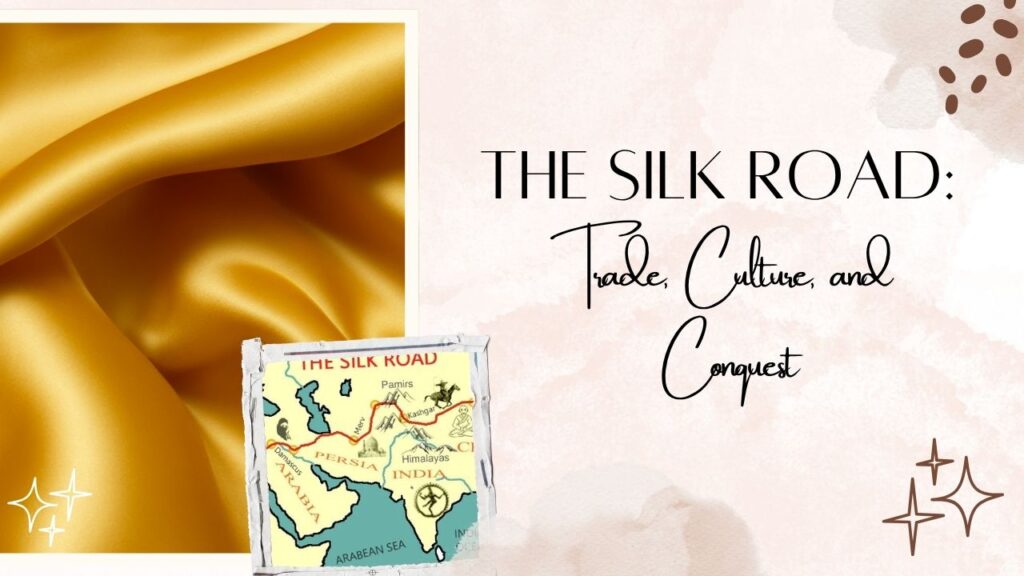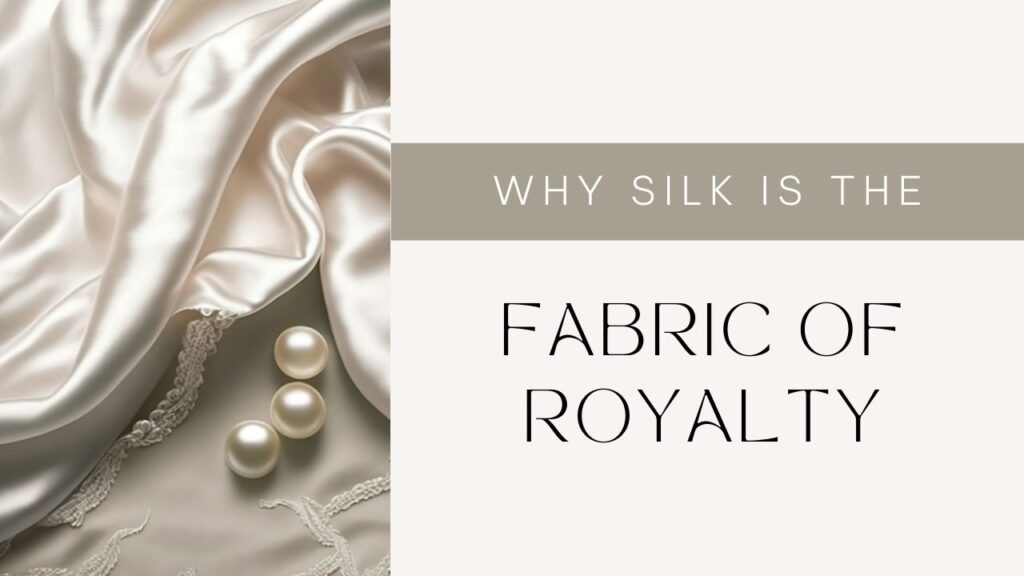Introduction
Picture a world where there we no machines to spin threads in seconds, no vehicles to transport treasures across the seas, and no way to showcase your latest fashion!
Many of us will think of it as a fluke, but it is a reality! Yet, long before our modern conveniences came into existence, a delicate, single thread was carving a name for itself in the history books, scaling mountains, crossing empires and deserts to connect with the civilizations far and wide.
Wondering which fabric it is? This is our beloved silk’s story! A fabric so rare, so soft, and so radiant that it was worth more than gold.
But the magic of the silk went beyond its aesthetic appeal! It whispered royal secrets, told tales of ancient inventiveness, and could communicate with people across great distances. Silk was used to weave together cultures and not only dress bodies, as seen in the regal robes of Roman nobility and the inquisitive hands of a Chinese empress.
Come along with me as we trace the fabled history of silk and learn how this beautiful fabric came to represent elegance and cross-cultural interaction. Get ready to be mesmerised by the amazing journey of silk, one glistening thread at a time.
The Discovery of Silk in Ancient China
Many of us will find it hard to believe, but it is true! According to a legend, Silk’s discovery story began with a simple cup of tea! Hard to believe, right?
The story goes back to 2700 BCE, when the wife of the Yellow Emperor sat beneath the shade of a mulberry tree, savoring her tea one quiet afternoon in ancient China. All of a sudden, a small cocoon plopped into her cup of tea.
As she tried to bring the cocoon out of the cup, it began to unravel, releasing a shimmering, delicate thread. That was the very first time when the world had its first glimpse of Silk, and Empress Leizu quickly recognized it was something special.
During ancient times, the Chinese were experts at raising silkworms. The process is called sericulture. The experts turned the tiny threads into an exquisite cloth, but they kept it a secret and they protect it for more than two millennia.
Anyone caught smuggling silkworms out of China or sharing the know-how could be executed. Silk was more than just fabric; it was a royal asset that only the affluent could afford. Wearing silk was a symbol of beauty, wealth, and purity.
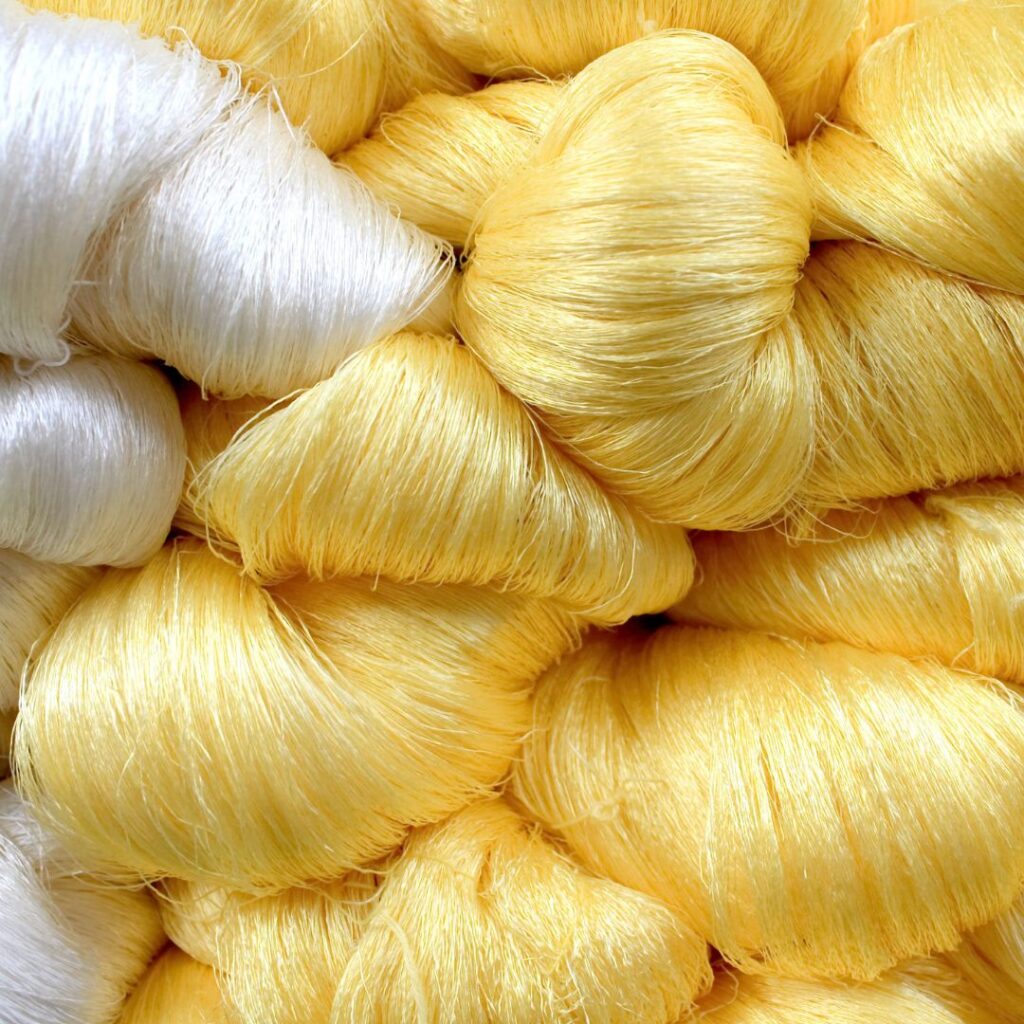
The Rise of the Chinese Silk Industry
In the past, the responsibility of producing silk at home fell on women in Chinese households. From one generation to the next, it was a part of their everyday lives.
The beauty and value of silk, however, could no longer be contained in the house over time. During the Shang dynasty, silk had become a status symbol in China.
The silk production during the Han Dynasty reached its peak. Silk production went industrial, where armies of dyers and weavers started churning out vibrant patterns. Silk was treated like a treasure and was valued so much that it became a form of currency. Imagine receiving your annual salary in shiny silk bolts rather than coins! Isn’t it fascinating?
Because of these closely guarded abilities and methods, silk became a legend that others could only aspire to.
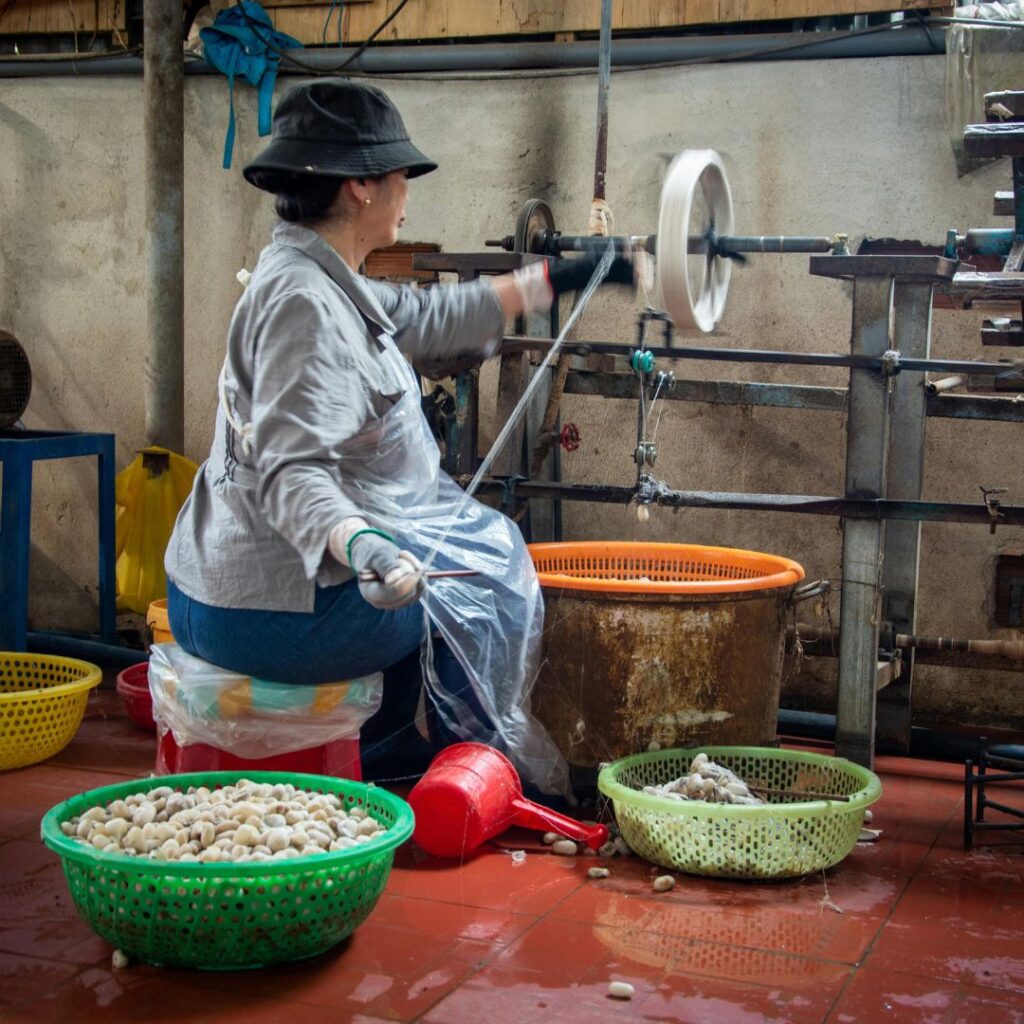
Silk and the Silk Road
Silk’s value went far beyond the fabric itself. Due to its overwhelming demand, a whole trading network, now known as the legendary Silk Road, was established, one that connected empires and wound across continents.
Silk travelled from China across the Middle East into Europe, passing through busy marketplaces, mountains, and deserts. Merchants exchanged it for jewels, glass, spices, and gold.
But goods weren’t the only thing on the Silk Road. As those caravans travelled, ideas, religions, and cultures spread, altering the lands they passed through forever. Hundreds of years before the term was coined, it was globalisation.
Silk’s Arrival in the West
Silk has always been associated with more than just elegant apparel.
- The fabric was considered a symbol of social significance, beauty, and nobility in China.
- It is used in religious rituals and colourful festivals in India. People’s most cherished moments are intertwined with it.
- Silk is linked to inner beauty, craftsmanship, and harmony in Japan.
- Silk has long been used as a status and luxury symbol throughout Europe.
Silk still has the same classic appeal. Wearing silk is like wearing history with style, whether it’s in the form of a custom-designed gown, a delicate kimono, or a handwoven sari.

The Globalization of Silk
Prior to global brands and fast fashion, silk was the most sought-after luxury in the world.
It sparked diplomatic missions, trade routes, and even espionage in addition to providing clothing for royalty. Instead of merely wearing silk, people sought it out, saved it, and guarded its secrets like gold.
Silk was widely used in the Middle Ages, hanging in the great halls of European castles, strutting through Indian bazaars, and adorning Persian sultans. Additionally, silk jumped across oceans into the New World as colonization grew.
That legacy continues to this day. Silk is still a global phenomenon, from Brazilian weaving mills to Chinese mulberry farms. With each thread, designers, artists, and dreamers continue to strive for it and create new narratives.
But to truly appreciate what silk is today, we need to trace the steps it took along the world’s first great global highway: the Silk Road.
Symbolism and Cultural Impact of Silk
Silk has an almost mystical quality. You’ll understand after running your fingers over it! It’s not just a piece of fabric. Centuries of tradition, significance, and subdued luxury are all part of it.
Silk was more than just a material in ancient China; it was a representation of elegance, nobility, and purity. Imagine royalty wearing glistening robes, each thread revealing a tale of grace and artistry. Silk and India have a long and strong relationship.
Consider weddings, celebrations, and colourful customs where silk sarees are more than just clothing; they are treasures handed down through the ages. Silk is deeply associated with art and harmony in Japan, where it is skilfully woven into exquisite kimonos that combine philosophy and fashion.
And in Europe? Silk meant class. Only the elite could afford it, and its presence whispered wealth without a word.
Silk still has that understated elegance today. It continues to enchant people from all walks of life, from high-fashion gowns to delicate scarves and bridal attire.
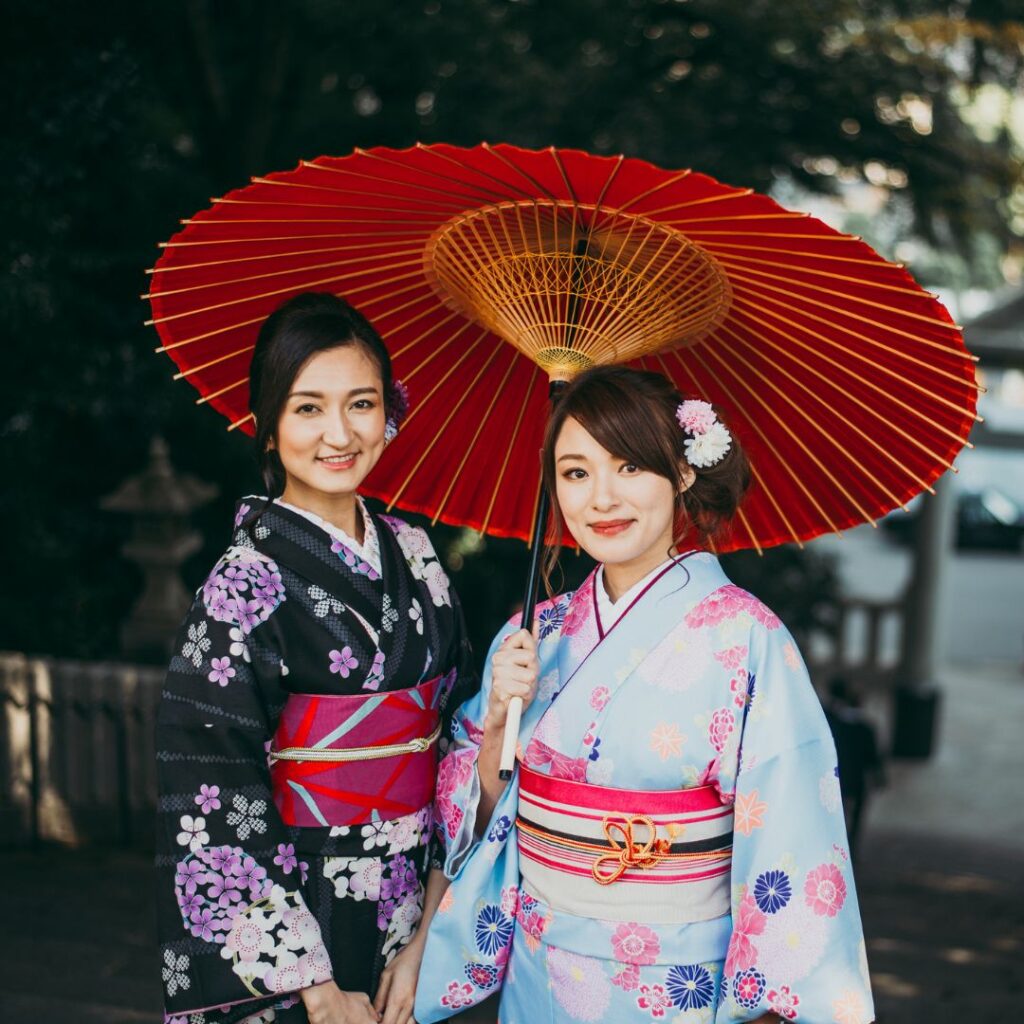
Sustainability and the Future of Silk
Silk is embracing a new era as people grow more conscious of the influence of fashion.
Traditional silk isn’t always cruelty-free, even though it is natural. This has sparked a surge of innovation, including plant-based silk substitutes, peace silk (where the silkworm lives out its life), and even lab-grown bio-silk that replicates the real thing without causing harm.
The designers are paying attention. Sustainable practices and ethical silk are now used in an increasing number of collections. Through the use of natural dyes, zero-waste weaving, and collaboration with fair-trade artisans, the silk industry is starting to embrace the principles of a future that prioritises the planet.
In a perfect world, your silk scarf would not only be exquisite, but it would also convey a tale of thoughtful decisions, justly compensated farmers, and painlessly spun threads.
Imagine a world where your silk scarf not only looks beautiful but also tells a story of conscious choices, of farmers paid fairly, and of threads spun without suffering.
That’s where silk is headed: gentler, smarter, and more inclusive.
Conclusion
Silk has a fascinating history that spans from a tea garden in ancient China to Paris’s haute couture runways. It’s an intriguing tale of ingenuity, craft, secrecy, and curiosity, and it’s far from finished.
This exquisite fabric, which originated from a silkworm’s cocoon, has evolved into a universal representation of creativity, beauty, and culture. Furthermore, it still inspires, develops, and unites us in ways that go well beyond fashion.
FAQs
1. Who first discovered silk?
According to Chinese legend, Empress Leizu stumbled upon silk around 2700 BCE when a cocoon fell into her tea and began to unravel. Curiosity led to discovery, and the rest is history.
2. Why did ancient China guard silk production so closely?
Silk was China’s golden ticket in global trade. To protect their monopoly, they kept sericulture (silk farming) a secret for centuries.
3. What exactly was the Silk Road?
It was a vast network of trade routes linking China with Europe, Africa, and the Middle East, with silk as one of the star commodities exchanged.
4. How did silk reach Europe?
Through traders journeying along the Silk Road. Later, Byzantine spies reportedly smuggled silkworm eggs out of China, helping Europe start its silk industry.
5. Is silk still made the traditional way?
Yes and no! While traditional sericulture is still practiced, modern technologies and cruelty-free alternatives are becoming increasingly common.
6. Why has silk always been considered luxurious?
Its natural shimmer, softness, and rarity gave silk an aura of elegance and exclusivity, making it a go-to choice for royalty and the elite.
7. Which countries produce silk today?
China remains the biggest player, followed by India, Uzbekistan, Thailand, and Brazil.


